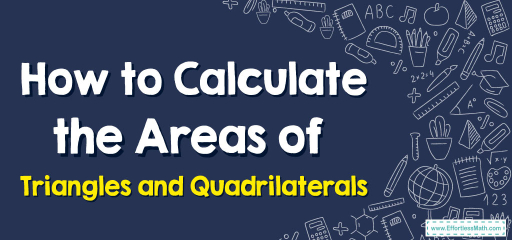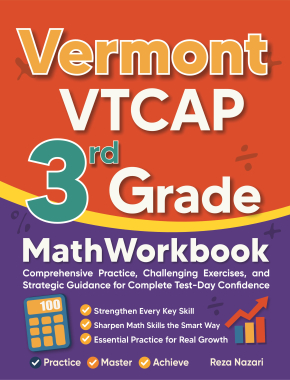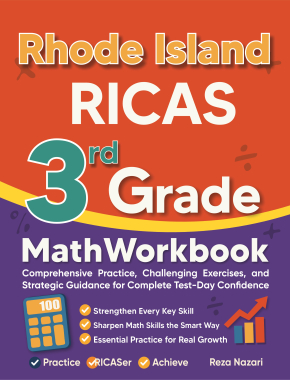How to Calculate the Areas of Triangles and Quadrilaterals

Examples
Practice Questions:
- Determine the area of a triangle with a base of \(12 \text{cm}\) and a height of \(8 \text{cm}\).
- Calculate the area of a square with a side length of \(6 \text{cm}\).
- What is the area of a parallelogram with a base of \(9 \text{cm}\) and a height of \(5 \text{cm}\)?
- A rhombus has one diagonal measuring \(15 \text{cm}\). If its area is \(45 \text{cm}^2\), find the length of the other diagonal.
- \(48 \text{cm}^2\).
- \(36 \text{cm}^2\).
- \(45 \text{cm}^2\).
- \(6 \text{cm}\).
Original price was: $109.99.$54.99Current price is: $54.99.
Original price was: $109.99.$54.99Current price is: $54.99.
Original price was: $114.99.$54.99Current price is: $54.99.
Related to This Article
More math articles
- Teenager’s Books That Make Math Fun
- 5th Grade IAR Math Practice Test Questions
- Overview of the PSAT / NMSQT Mathematics Test
- 3rd Grade PARCC Math Worksheets: FREE & Printable
- A Comprehensive Guide to Learning How to Add Three or More Fractions with Unlike Denominators
- 3rd Grade SBAC Math Worksheets: FREE & Printable
- 6th Grade Common Core Math Practice Test Questions
- Top 10 Free Websites for ATI TEAS 7 Math Preparation
- How to Determine Functions?
- How to Solve Angle Measurements Word Problems




























What people say about "How to Calculate the Areas of Triangles and Quadrilaterals - Effortless Math: We Help Students Learn to LOVE Mathematics"?
No one replied yet.